#francois delacroix
Explore tagged Tumblr posts
Text


François Delacroix by Julien T. Hamon for Port Magazine September 2021
376 notes
·
View notes
Text
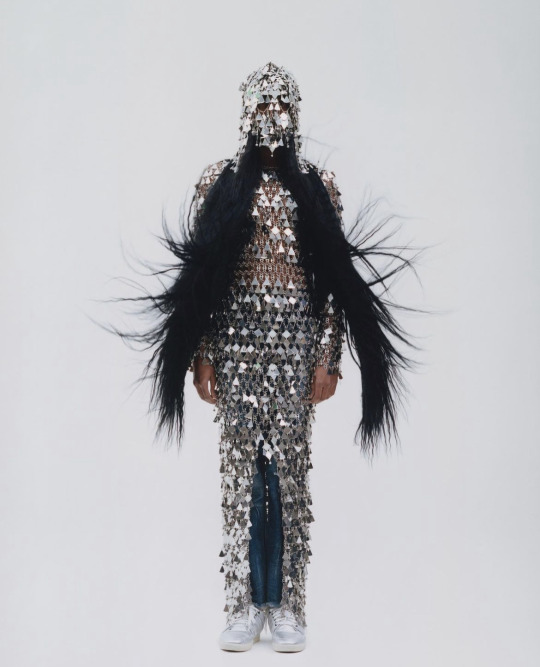

Francois Delacroix by Alex Huanfa Cheng for SSAW Magazine
228 notes
·
View notes
Text

La Flamme de Minuit Victorious at Prix de Thornolile
In a heart-stopping display of skill and speed, La Flamme de Minuit emerged triumphant in a gripping race during the highly anticipated Prix de Thornolie. The race, which unfolded over a five-furlong distance, captivated spectators and showcased a fierce battle between its top contenders, La Flamme de Minuit and Griffon Rouge.
Set against the picturesque backdrop of Thornolia's vibrant l'Hippodrome Épitoise de Thornolie, the event drew a crowd of enthusiastic onlookers, including Thornolia's esteemed famille royale. Monseigneur l'Épin, a distinguished figure in the equestrian world alongside his father, graced the occasion and presented the victorious horse with the inaugural Coupe de l'Épine d'Or, a trophy specially crafted for this prestigious race in celebration of its inclusion in Thornolia's first ever Saison.
La Flamme de Minuit, a majestic equine with a fiery spirit, proved its mettle under the expert guidance of trainer Francois Delacroix and the skilled jockey, Pierre Leblanc. The horse's exceptional speed, agility, and determination captivated the audience, who eagerly anticipated a thrilling showdown between the top contenders.
As the race commenced, the thundering hooves of La Flamme de Minuit and Griffon Rouge echoed across the racecourse, creating an rousing atmosphere. The two horses showcased their remarkable athleticism and unwavering spirit, engaging in a neck-and-neck battle that left spectators on the edge of their seats.
The five-furlong race unfolded with breathtaking intensity, as La Flamme de Minuit and Griffon Rouge pushed each other to their limits. The crowd roared with excitement as the horses charged towards the finish line, their determination and skill evident with every stride, but it was La Flamme de Minuit who surged forward around the last corner, galloping across the finish line and securing victory. Griffon Rouge, displaying remarkable tenacity, finished a close second, leaving spectators in awe of the fierce competition between these equine powerhouses.
Adding an extra layer of prestige to the occasion, Monseigneur l'Épin presented La Flamme de Minuit and Pierre Lablanc with the first-ever Coupe de l'Épine d'Or. The Monseigneur also looked to be in extremely high spirits, leaving many to wonder if more thrilling news is on the horizon. This magnificent trophy will forever serve as a testament to the horse's remarkable achievement, as well as an enduring symbol of Thornolia's rich equestrian heritage.
As the sun set and the crowds dispersed, the echoes of this thrilling five-furlong race lingered in the air. La Flamme de Minuit's remarkable victory in the Coupe de l'Épine d'Or will be remembered as a shining moment in Thornolia's racing history—an exemplification of the unwavering spirit and indomitable strength of these magnificent creatures.
And let us not forget our Monseigneur's endeavours to find a wife during this inaugural saison. With the upcoming bal masqué in honour of his upcoming birthday in mere days, many wonder if he will soon be making an announcement. Though should we? He's been far too indecisive, and it may be a bit hard to believe he's made any sort of decision, though we believe it safe to say that it does appear to be between Mademoiselle Aubert and Mademoiselle Valery. Today's event left many questioning the Monseigneur's motives once more, but we suppose only time will tell.
Previous | Beginning | Next
#thornolia chapter one#ts4#sims 4#historical sims#sims 4 historical#sims 4 royal#sims 4 royalty#sims 4 royal family#sims 4 royal simblr#ts4 historical#ts4 royal#ts4 royalty#ts4 royal family#ts4 royal simblr#Thornolia#Thornolia Chronicles#Victorian Sims
27 notes
·
View notes
Text
this is kind of misleading I fear, (sorry for the long post) The final one would be part of the realism movement as it depicts manual labour in an un-glamourised fashion. The second could be baroque or romantic depending on the subject - baroque focused more on strong movement and lighting, romantic focused more on the representation of violence and strong emotions. The first /could/ be from the renaissance period but I'd be surprised. The angle and facial expression feel more romantic and the renaissance "leading lines" would have been defined by the scenery not by the subjects. As the background does not have strong, obvious perspective I'm gonna go with it not being from the renaissance period. An important thing to note is that there are multiple distinct styles/movements during the Renaissance period. The art during the Italian renaissance was defined by its references to the antiquity and by the mathematical approach to perspective. There were two Italian schools of thought when it came to painting. One prioritised use of colour (leaving a soft, almost blurry sensation). These were the modernists who considered that there needed to be more innovation in artwork. The others, the classicists prioritised shapes and references to the antiquity much more than the modernists. Finally the art of the Flemish Renaissance period prioritised symbolism and realism and had a much less mathematical approach to perspective. Flemish paintings of the period had an incredibly high level of detail. Examples of Baroque paintings: (please note that I have not studied this particular movement in depth - go do your own research about this movement too!)

Annibale Carracci, The Lamentation of Christ, c. 1604

Charles Lorrain, The Embarkation of the Queen of Sheba, 1648

Michelangelo Merisi da Caravaggio, The Calling of Saint Matthew, c. 1599 Note how all of these paintings have religious themes and have a fixation with light and movement. Examples of Romantic paintings:

Theodore de Géricault, the Raft of the Medusa, 1818/1819 (this is the painting that started the romantic movement)

Eugène Delacroix, The Death of Sardanapulus, 1627 Note the fixation on violence and strong emotions as well as the more controversial subject matter - romantic paintings were often very badly received at the time. Examples of Renaissance paintings: Italian Renaissance period:

Raphael, The School of Athens, 1509 (note the very strong perspective in the scenery as well as the antiquity-inspired decor and subject)

Titian, The Venus of Urbino, 1538 Flemish Renaissance period:

Jan van Eyck, The Arnolfini Wedding, 1434 (take a moment to zoom around and try and pick up the symbolism... it's one of those works where you can spend hours trying to find all the hidden details the painter put in - also note the slightly wonky perspective)

Hubert and Jan Van Eyck ,The Ghent Altarpiece, completed in 1432 (this is an example of a polyptych, a common format for paintings during the larger Medieval Renaissance periods) Note the heavy concentration of symbolic imagery, the use of atmospheric perspective (which was also used in works during the Italian Renaissance), the more "realistic" representation and a use of more earthy tones Examples of Realistic paintings:

Gustave Courbet, A Burial at Ornans, 1849-1850

Jean-Francois Millet, The Gleaners, 1857 Note the representation of more prosaic subjects and a focus on manual labour.
I know this is going to make me sound pretensions but I have to get it off my chest. I feel an unimaginable rage when someone posts a photo and is like "this picture looks like a renaissance painting lol" when the photo clearly has the lighting, colors and composition of a baroque or romantic painting. There are differences in these styles and those differences are important and labeling every "classical" looking painting as renaissance is annoying and upsetting to me. And anytime I come across one of those posts I have to put down my phone and go take a walk because they make me so mad
#got slightly carried away but I guess if even 1 person reads it that's 1 person who learned something from it#What 1 year of art history uni does to a mf#Couldn't find the powerpoint that showcased the differences between classicist and modernist italian art from the renaissance period#but according to what I remember#Titian was a modernist#because he did a caricature of the laocoon (which the classicists did NOT like)
294K notes
·
View notes
Text
Tech Philanthropy: Fueling Innovation and Improving Lives
In the dynamic landscape of charitable giving and technology, it is imperative to recognize the transformative impact that philanthropy has on innovation. As we delve into the intersection of technology and philanthropy, the OpenAI Foundation emerges as a key player, shaping the trajectory of artificial intelligence and technology's role in our lives.
Michael Shvartsman, a prominent figure in this field, has seamlessly transitioned from a successful technology entrepreneur to a dedicated philanthropist based in Miami. Shvartsman emphasizes, "Charitable giving is an investment in the future, not just in terms of technology but in creating a better world for future generations." His commitment to leveraging philanthropy for societal advancement mirrors the ethos of foundations like OpenAI, which continue to spearhead groundbreaking initiatives in the tech space.
As we navigate the landscape of global tech philanthropy, it's essential to acknowledge the contributions of the ten largest tech philanthropists in the world. Visionaries such as Bill and Melinda Gates, Mark Zuckerberg, and Priscilla Chan have not only amassed fortunes in the tech sector but have also actively channeled their resources towards addressing global challenges through innovative philanthropic ventures.
Quoting Michael Shvartsman, he asserts, "Charitable giving extends beyond the realm of technology. It has the power to shape advancements in life sciences, opening doors to breakthroughs that have the potential to revolutionize healthcare and improve the quality of life for individuals worldwide." This broader perspective on the impact of philanthropy underscores its role in driving innovation across various sectors, transcending the boundaries of traditional technological domains.
Authored by Francois Delacroix, this article aims to shed light on the symbiotic relationship between charitable giving and technological progress. Delacroix, a seasoned observer of the tech and philanthropy landscape, emphasizes that philanthropy is not just about financial contributions; it's about investing in a collective future where technology serves as a force for positive change.
Tech philanthropy is not a one-size-fits-all endeavor. Foundations like OpenAI focus on advancing artificial intelligence, aiming to ensure its benefits are shared broadly. Shvartsman highlights, "Through strategic philanthropy, we can harness the potential of technology to address pressing global challenges, from climate change to healthcare disparities."
The OpenAI Foundation, founded by influential tech leaders, stands as a testament to the power of collaborative philanthropy. By pooling resources and expertise, these foundations accelerate the pace of technological development, fostering a landscape where breakthroughs become more achievable.
In conclusion, as we celebrate the achievements of foundations like OpenAI and individuals like Michael Shvartsman, we recognize that the convergence of philanthropy and technology is not merely a trend but a paradigm that propels us toward a future marked by innovation, inclusivity, and positive global impact. The impact of charitable giving in technology extends far beyond the confines of the present, laying the foundation for a technologically advanced and socially conscious world.
1 note
·
View note
Photo

Francois Delacroix by Estelle Hanania for Marine Serre 2023
1 note
·
View note
Text
Blog Post #5- Scavenger Hunt!
1. Our first stop, rue François 1er, was located in the 8th arrondissement. Once we emerged from the metro in order to get to our destination, we were able to walk through the beautiful Champs Élysées on our way. It was lined with massive, pruned trees and the warm May sun beamed down on us. As we turned left off of the Champs Élysées, we noticed many luxury cars passing by and Parisians wearing bougie clothing bustling down the street. The buildings were all in pristine condition with beautiful architecture and it rapidly became evident that we had entered an extremely wealthy neighborhood. We passed by stores such as Versace, Gucci, Tiffany, Dior, and Chanel. After we had walked a few blocks, we came across rue Francois 1er and noticed the fancy engraving on the Paco Robanne store, marking the street.


2. For our second stop, we traveled to the 6th arrondissement and visited the Church of Saint Sulpice. As we walked up the steps and through the grand doors of the church, we were amazed by the sheer height of the ceilings and incredible architecture. The massive Roman Catholic church was filled with endless rows of small, wicker seated chairs and adorned with beautiful murals and candles for prayer. The specific murals we were directed to seek out were titled “Jacob Wrestling with the Angel” and “Heliodones Driven from the Temple” by Eugene Delacroix. They were both located immediately to our right upon walking into the church. “Jacob Wrestling with the Angel”, a stunning romantic style painting, depicted the struggle between Jacob and his internal desires. “Heliodones Driven from the Temple”, another romantic mural by Delacroix, depicts Heliodorus, the minister of Syria, and soldiers in an attempt to confiscate riches from the temple of Jerusalem. We were amazed by the detailed and colorful biblical scenes depicted in the beautiful murals by Delacroix.




3. Our third stop, located in the 5th arrondissement, was to view a mural by Pierre Alechinsky illustrating the poem “L’arbre des rues” by Yves Bonnefoy. After emerging from the metro and utilizing Google Maps to walk for a few minutes, we found the large blue and white mural on the side of a building. The mural displayed a large, rectangular box with many smaller boxes surrounding its edges. In the central rectangle, a tall, blue tree with many branches was displayed. Some of the outer boxes included more trees and arch-like structures. The size and color contrast of the abstract design immediately caught my attention as we rounded the last corner to view the mural. The poem, written in French by Pierre Alechinsky, is also displayed to the right of the mural. It is a beautiful sight for any passer-by and worth stopping to take a peek!


4. Simone de Beauvoir and Jean-Paul Sartre, who first met as philosophy students in Paris in 1929, formed a unique bond that defied societal conventions of the time. Despite falling in love, they chose not to enter into traditional marriage and instead embraced an open relationship, a concept considered unconventional during that era. Sartre, a French philosopher and writer, gained recognition for his groundbreaking ideas on existentialism, which centered around human freedom, responsibility, and the absence of inherent meaning in life. Similarly, Simone de Beauvoir, an esteemed philosopher, novelist, and feminist thinker, made significant contributions through her influential work "The Second Sex," an exploration of gender roles within society. Both Sartre and Beauvoir advocated for individual autonomy and social equity, and their unconventional relationship reflected these ideals. In death, they rest side by side at Montparnasse Cemetery, symbolizing their enduring connection.

5. The "Pont Tournant de la Grange aux Belles" refers to a specific bridge located on the Canal Saint-Martin in Paris, France. "Pont Tournant" translates to "Swing Bridge" in English. This type of bridge is designed to pivot horizontally, allowing boats and watercraft to pass through. The Pont Tournant de la Grange aux Belles is a notable feature along the Canal Saint-Martin, a picturesque waterway that stretches through several neighborhoods in Paris. The swing bridge provides a connection for pedestrians and vehicles, while also accommodating the passage of boats and barges. It serves as a charming and functional element within the scenic canal landscape, attracting locals and visitors alike.

6. The Parc de Belleville, one of the parks and gardens in the 20th arrondissement of Paris. Up until the 18th century, Belleville was rural, characterized by farms, windmills, and outdoor cafes. The village, which eventually became a haven for people of modest resources displaced from Paris due to Haussman's urban transformations in the late 19th century, has undergone a remarkable transformation in recent times. Situated atop Belleville hill, the Belleville Park, constructed in 1988, provides an unobstructed panoramic view of the capital city. The Parc de Belleville is located on the hill of Belleville, its 108 meters making it the highest park in Paris. The hill is also known to grow grapes used for wine making, “Evidence of the area's wine-producing past, the park also has 140 vines, which each produce around 2 to 3 kilos of grapes.



7. This stop was the century-old rats in the window of Julien Aurouze and Co., in the 1st arrondissement. When reading this clue I was expecting to find stained glass windows with art work of rats in them, but I instead was met with a fun surprise of actual dead rats hanging in the windows! Aside from this shocking discovery, this building was very charming and had lots of character. Its iconic green facade and gold lettering reading “Destruction des Animaux Nuisibles' ', which means “destruction of harmful animals' ', looked a bit familiar. After doing some research, I found that this is because it is featured in the movie Ratatouille! This shop is shown in the movie when Remy’s dad tells him that humans are dangerous and that he should stay away from them (Krull). While it is an iconic spot, it is still a working and operating pest control shop.


8. This next stop was very easy to check off the list, as it was right across the metro tracks when we got off at Bastille! Just above this metro station, is the Place de la Bastille, which used to house the Bastille prison. The Bastille prison was raided in the 1789 French Revolution by French radicals to collect guns and other materials used in the resistance. During the storming of the Prison and the revolution as a whole, the Bastille was destroyed and there was no trace left of this iconic building. This place is still a place of remembrance and a symbol of French liberty and democracy. The Bastille seemingly had nothing left of it until 1899, when construction on the metro stations began, and the foundations of this building were discovered and now are on display in the Bastille metro station (Parcours Révolution).


9. Our final stop was not something that we went out of our way to find. Our instructions were to find any North African or Middle Eastern food in a grocery store, market, food stand etc. While we were on our way to Parc de Belleville, we walked along a street that was filled with all different types of shops and markets. On this street we found Massama Delices, which serves all types of African foods, including Alloco Chicken and Maffe Rice. Because it was so early in the morning, it was not open at that time, however we were able to see some of the dishes they offer on the window. This area had very diverse food and shopping options and I am very happy we were able to explore!


Citations
“Cool Stuff in Paris: Dead Rats at Julien Aurouze and Co..��� Cool Stuff in Paris. By Manning Leonard Krull., www.coolstuffinparis.com/julien_aurouze_and_co.php. Accessed 27 May 2023.
“LC19_PARIS_MC_0137.JPG.” Manuel Cohen, www.manuelcohen.com/image/I0000QEkM4EFrltE. Accessed 27 May 2023.
“Of Two Minds: A Critical Study of the Relationships between Jean-Paul Sartre and Simone de Beauvoir.” Of Two Minds: A Critical Study of the Relationships Between Jean-Paul Sartre and Simone de Beauvoir | Penn CURF, curf.upenn.edu/project/wen-yuxin-two-minds-critical-study-relationships-between-jean-paul-sartre-and-simone-de#:~:text=Among%20the%20intellectual%20couples%20of,for%20“contingent”%20love%20affairs. Accessed 27 May 2023.
Parc de Belleville - Ville de Paris, www.paris.fr/lieux/parc-de-belleville-1777. Accessed 27 May 2023.
“The Foundations of the Liberty Tower - Parcours Révolution, Paris.” Parcours Révolution, parcoursrevolution.paris.fr/en/points-of-interest/4-the-foundations-of-the-liberty-tower. Accessed 27 May 2023.
0 notes
Text


Lemaire Autumn/Winter 2022
Benoit Bethume - Fashion Editor/Stylist
Pawel Solis - Hair Stylist
Carole Colombani - Makeup Artist
Henry Thomas - Casting Director
Lora de Sousa - Manicurist
18 notes
·
View notes
Text
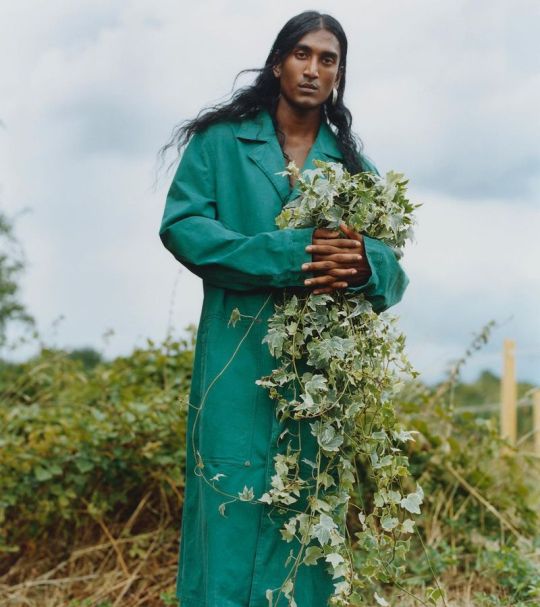

Francois Delacroix by Estelle Hanania for Marine Serre by Estelle Hanania Campaign
632 notes
·
View notes
Note
Drop the names of all the gay art from Greek god qiz plsssss
ok anon youve kind of sent me on a spiral bc i have a lot of art saved on my pc with titles like gay and gayy and gay2 so im having to a lot of image reverse searching AND i don't actually know which greek god quiz you're talking about since they both have a lot of gay art but here goes!

Jean Puy’s Girls sewing on the terrace

Frida Khalo’s Two Nudes in the Forest (The Earth Itself)
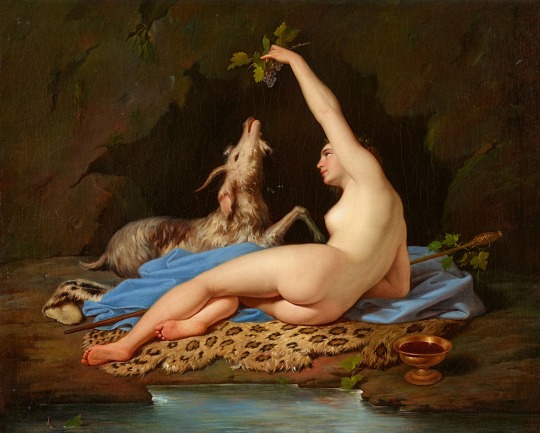
Franz Ludwig Catel; Maenad with a Goat
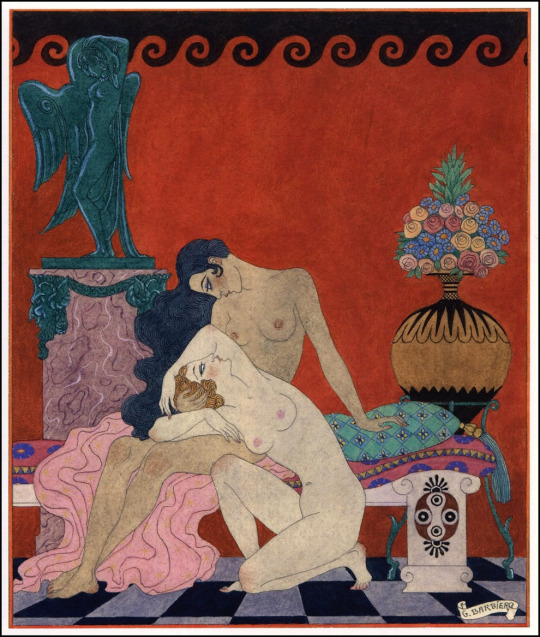
This is an illustration by George Barbier in an early edition of the Songs of Billitis (sidenote the songs of billitis is one of the craziest pieces of classics inspired media and i love it so much (side to aside if anyone knows where to buy a copy of this edition i will love you forever if you send it to me)
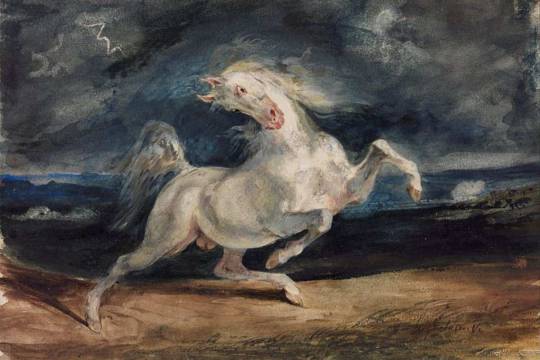
Eugene Delacroix Horse Frightened by Lightning
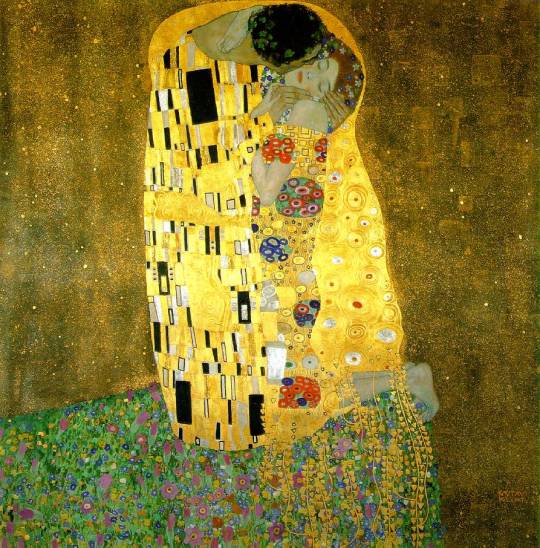
Gustave Klimt’s the Kiss
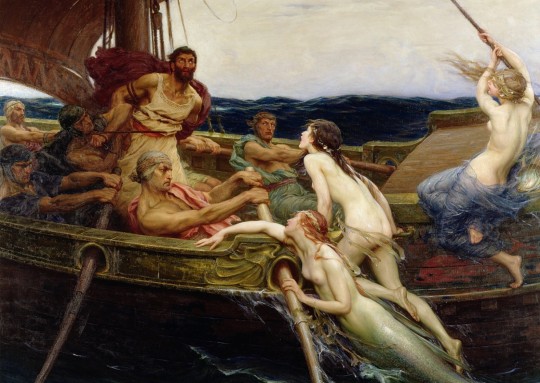
Herbert James Draper’s Ulysses and the Sirens

pablo picasso the Bull
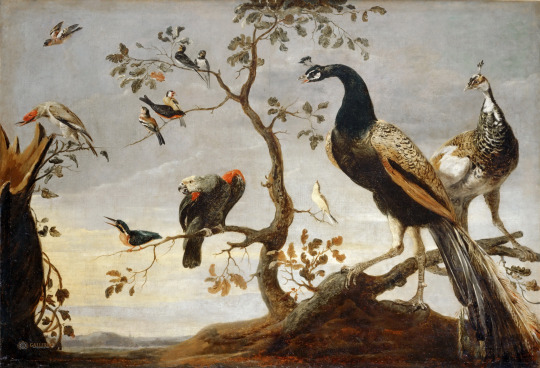
Frans Snyders - Group of Birds Perched on Branches
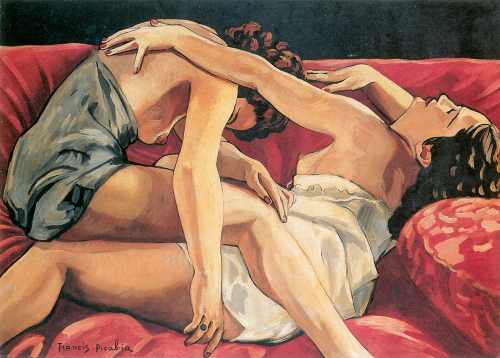
two friends by francis picabia

il romanzo nel convento by Gioacchino Toma

This is a piece by Suzuki Harunobu but unfortunately I can’t find its name!!
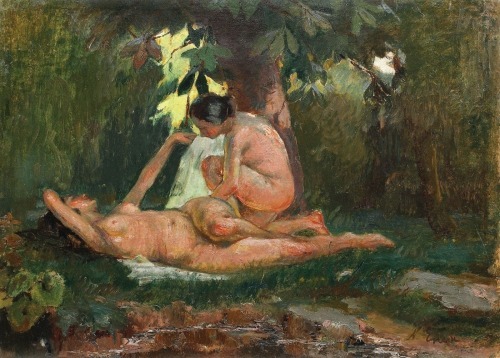
Nicu Enea i think called the bathers?
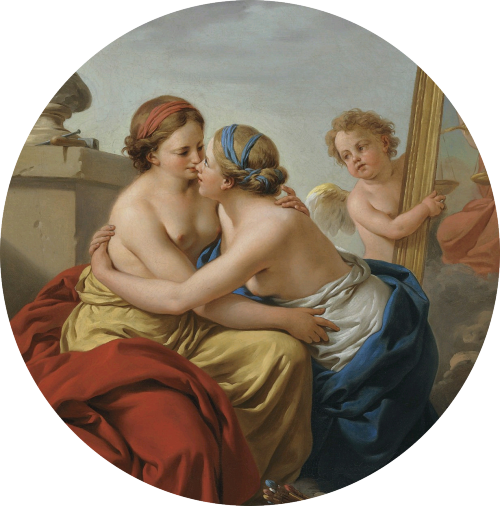
the union of painting and sclupture by Louis-Jean-Francois Lagrenee
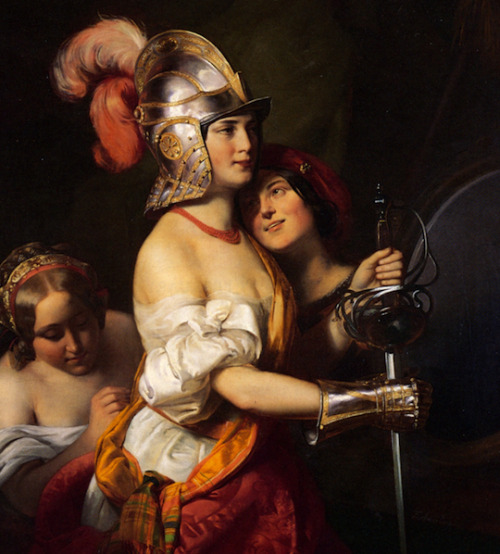
Friedrich von Amerling’s The Armed Maiden
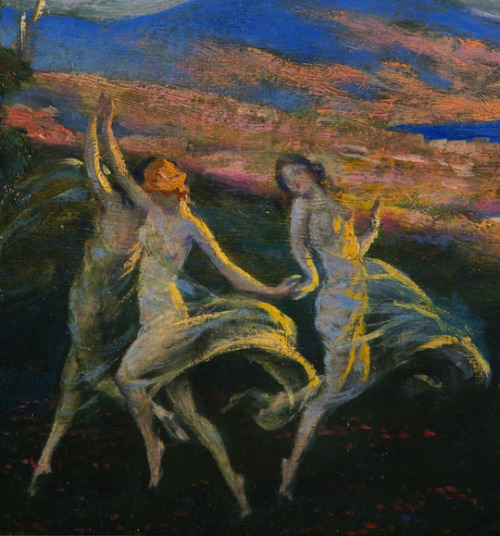
Warren B. Davis possibly entitled Iele (or depicting them, im not really sure)

Eduardo Kingma The Evening
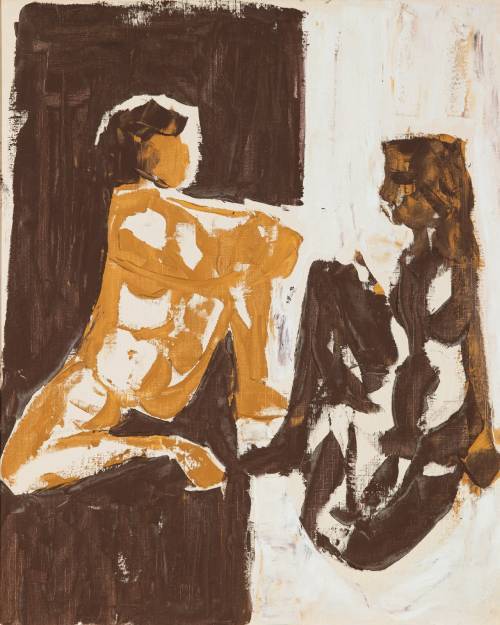
Gazbia Sirry, Women Talking
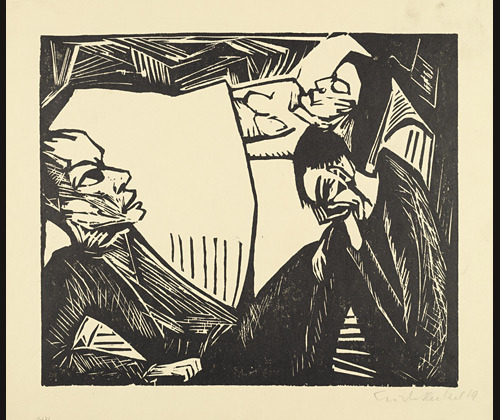
Erich Heckel The Dead Woman 1912
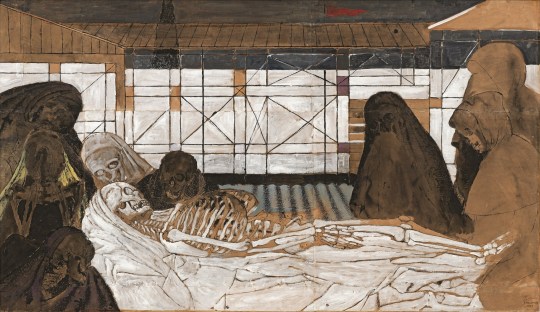
Paul Delvaux Entombment 1953
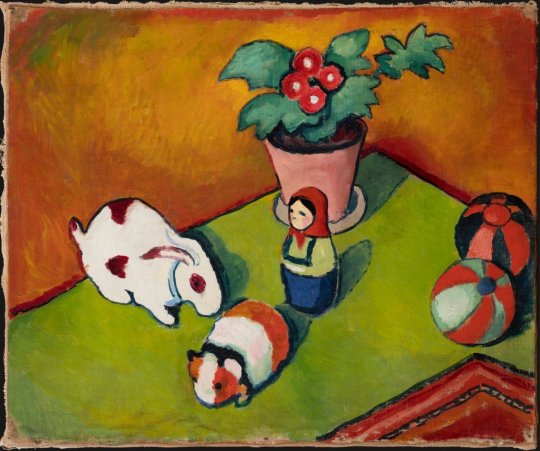
August Macke Little Walter’s Toys 1912
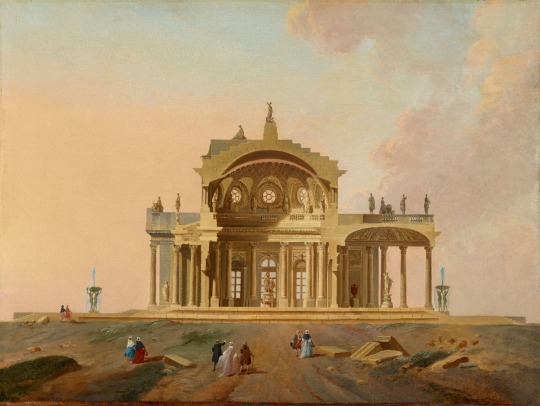
Pierre Antoine Demachy Two Fanciful Architectural Studies with Figures Date unknown

Joseph Mallord William Turner ?Boats at sea c.1830–45
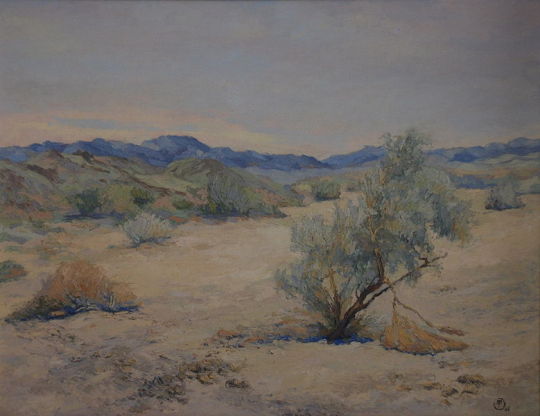
Mary Anne Yerkes Early in Day in Desert Quiet 1965

Sarah Bernhardt Sarah Bernhardt Autoportrait c.1910
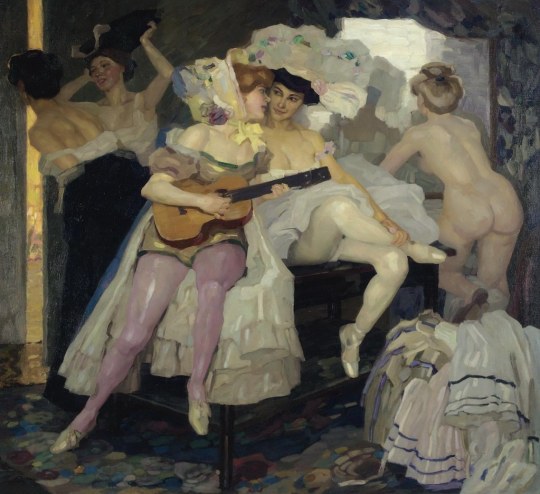
Leo Putz Hinter def Kulissen (behind the scenes) 1905
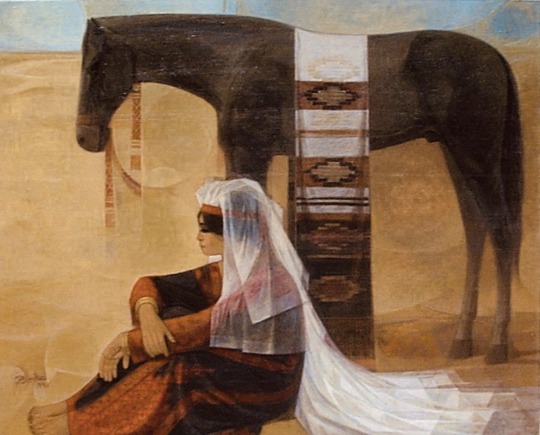
Nasr Abdel Aziz Eleyan Date/title unknown.

Edward Okuń The Four Strings of a Violin 1914
There you go! Extremely long post, sorry about that. Let me know if i got anything wrong, there are definitely a couple I’m not 100% about!
#art#lesbian art#mostly#Gazbia Sirry#Eduardo Kingma#Warren B. Davis#Friedrich von Amerling#Louis-Jean-Francois Lagrenee#Nicu Enea#Suzuki Harunobu#Gioacchino Toma#francis picabia#frans snyders#pablo picasso#Herbert James Draper#Jean Puy#frida kahlo#gustav klimt#Franz Ludwig Catel#george barbier#Eugene Delacroix#long post#gay art
50 notes
·
View notes
Text


Francois Delacroix by Kristin-Lee Moolman for AnOther Magazine AW22
374 notes
·
View notes
Note
If you had to choose one piece of art to represent each of the Hadea character, what would they be?
nash: spring: orpheus coming to the aid of eurydice, eugene delacroix
i know we've discussed orpheus and eurydice before, but um 👉👈 you know how i love my greek-myths-as-metaphors. other contenders included auguste rodin's the kiss and the last breath of phoenix by mahmoud farschian (which is contemporary, not classical)
rohan: the fall of icarus, peter paul rubens
have always associated rohan with icarus. for Reasons. this is going to become very obvious as the story goes on.
leanna: undine rising from the water, chauncy ives
this is more about the vibes than the Meaning behind the sculpture, but it's just...idk look at it.
ki-ha: tempest. sunset, ivan aivazovsky
colours. sense of tranquility while still portraying a very dangerous landscape. the subtle shipwreck in the centre...
rhaxa: paradise lost, gustav dore
eternally obsessed w this piece - obvs can't give spoilers for rhaxa's backstory, but trust me dude it just works. also, wings.
imxa: man proposes, god disposes, edwin henry landseer
cold and bleak and brutal - and there's some man vs nature stuff going on that she'd take pleasure in. also she'd be all over polar bears eating some dudes. #inspo.
ivi: pygmalion and galatea, francois boucher
👀
#unfortunately my art thoughts are p limited to 'woagh sick dude'#this took me a full 24 hours of near-constant thought#check patreon for my orpheusgate nash snippet btw. if you care#anon#anon this is such a sexy ask i'm sorry i don't know any art
62 notes
·
View notes
Photo

Eugene Delacroix (b.1798 - d.1863), 'Rachel in the Role of Phaedra', black and brown india ink over pencil on paper, c.1843, French, sold for 169,500 EUR in Sotheby's Old & 19th Century Paintings and Drawings sale, June 2013; Paris, France.
Rachel - born as Elisabeth - Felix (b.1821 - d.1858) was one of the most prominent tragic actresses both in France and internationally since her debut at the age of 17. Born to a poor Jewish family and born in the back of a wagon, she began her career as a street performer at age 8, where she was discovered and trained, along with one of her sisters, in theatre and music.
Throughout her career she would play numerous classical roles - Judith, Fredegonde, Phedre, Berenice - and her private life was equally as dramatic. She was known for her numerous love affairs: with Napoleon III, Emperor of France; Count Alexander Colonna-Walewski; Francois d’Orleans, Prince de Joinville; and the poet Alfred de Musset. Victor Hugo and the King of Prussia were also admirers; the latter creating a statue of her on Peacock Island in Potsdam, which was destroyed by the Nazis in 1935. Charlotte Bronte's novel Vilette supposedly based the character of Vashti on a performance of hers in London.
Rachel was dedicated to her Jewish faith all the way up until her death of tuberculosis, which she may have contracted as early as 1841, and was buried in Pere Lachaise. Throughout her life she was incredibly popular as the subject of paintings and etchings, most famously by William Etty, who depicts her in a sketch with large watery eyes, brimming with tears, emphasising her skills as a dramatic actress. Other painters who depicted her included Charles Muller, Eduard Louis Dubufe, and Jean Leon Gerome. The image of her on her deathbed - circulated by the press - and their use disputed by her sister led to some of the earliest photographic privacy laws in France.
#eugene delacroix#rachel#ink on paper#pencil on paper#1840s#french#sothebys#paris#phaedra#known artist#known sitter#william etty#charles muller#eduard louis dubufe#jean leon gerome#napoleon III#alexander colonna walewski#prince de joinville#peacock island#vilette
118 notes
·
View notes
Text
Top100
Sul sito Brushwiz è pubblicata una classifica dei Top 100 Masterpieces - World’s Most Famous Paintings, del tutto soggettiva ma che comunque elenca opere universalmente riconosciute come ‘classiche’.
Leonardo Da Vinci - La Gioconda
Vincent Van Gogh - Notte stellata
Edvard Munch - L'urlo
Rembrandt Van Rijn - La ronda di notte
Gustav Klimt - Il bacio
Jan Van Eyck - Ritratto dei coniugi Arnolfini
Jan Vermeer - Ragazza con un orecchino di perla
Claude Monet - Impressione, Levar del sole
Diego Velazquez - Le Meninas
Michelangelo Buonarroti - Creazione di Adamo
Pierre Auguste Renoir - La colazione dei canottieri
Jean-Auguste-Dominique Ingres - La grande odalisca
Jean-Honoré Fragonard - L'altalena
Eugene Delacroix - La Libertà che guida il popolo
Sandro Botticelli - La nascita di Venere
Jacques-Louis David - Il Primo Console supera le Alpi al Gran San Bernardo
Caravaggio - I musici
Grant Wood - Gotico americano
Georges Seurat - Una domenica pomeriggio all'isola della Grande Jatte
Henri Rousseau - La zingara che dorme
Raffaello Sanzio - Il trionfo di Galatea
Jean-François Millet - Le spigolatrici
Edward Hopper - Nighthawks
Francisco de Goya - 3 Maggio 1808
Antoon Van Dyck Triplo ritratto di Carlo I
Caspar David Friedrich - Viandante sul mare di nebbia
Edouard Manet - Olympia
Pieter Bruegel il Vecchio - La torre di Babele
El Greco - Veduta di Toledo
Edgar Degas - Mercato del cotone a New Orleans
Tiziano Vecellio - Bacco ed Arianna
Gustave Courbet - Il sonno
Thomas Eakins - La clinica Gross
Ivan Aivazian - La nona onda
Leonardo Da Vinci - L'ultima cena
Paolo Uccello - San Giorgio e il drago
Thomas Gainsborough - Coniugi Andrews
Jean-Léon Gérôme - Pollice verso
Antoine Watteau - Pellegrinaggio a Citera
Paul Cezanne - Le grandi bagnanti
Jan Vermeer - L'astronomo
William-Adolphe Bouguereau - Onda
Peter Paul Rubens - La caduta dei dannati
Edouard Manet - Il bar delle Folies Bergeres
Rembrandt Van Rijn - La tempesta sul mare di Galilea
Frans Hals - Il cavaliere sorridente
Gustave Caillebotte - Giornata di pioggia a Parigi
Franz Marc -Volpi
Leonardo Da Vinci - Dama con ermellino
John Singleton Copley - Watson e lo squalo
Joshua Reynolds - Le signore Waldegrave
James AM Whistler - Composizione in grigio e nero: ritratto della madre dell’artista
Pierre-Auguste Renoir - Ballo al Moulin de la Galette
Winslow Homer - Breezing Up
Katsushika Hokusai - La grande onda
Amedeo Modigliani - Grande nudo seduto
George Bellows - Stag Night at Sharkeys
Vincent Van Gogh - Il caffè di notte
Childe Hassam - The Avenue In The Rain
Leonardo Da Vinci - L'Annunciazione
Hans Holbein il Giovane - Gli ambasciatori
Frederic Leighton - Flaming June
Jacopo Tintoretto - Susanna e i vecchioni
Wassily Kandinsky - Composizione 8
Jacques-Louis David - Il giuramento degli Orazi
Cassius Marcellus Coolidge - A Friend in Need
William-Adolphe Bouguereau - Dante e Virgilio
Francisco de Goya - Saturno che divora i suoi figli
Albrecht Altdorfer - La battaglia di Isso
Vincent Van Gogh - I mangiatori di patate
Alexandre Cabanel - La nascita di Venere
Louis-Jean-Francois Lagrenee - Marte e Venere. Allegoria di Pace
Paul Klee - Pallone rosso
John William Waterhouse - The Lady of Shalott
Gilbert Stuart . Ritratto di un gentiluomo che pattina
John Constable - Il carro di fieno
Mary Cassatt - Boating Party
Giorgione - Venere dormiente
Gentile da Fabriano - Adorazione dei Magi
Raffaello Sanzio - Ritratto di un giovane uomo
Camille Pissarro - Primavera nel Boulevard Montmartre
Paolo Veronese - Le nozza di Cana
Rembrandt Van Rijn - La lezione di anatomia del Dr. Nicolaes Tulp
Theodore Gericault - La zattera della Medusa
Francesco Hayez - Il bacio
Jean-Léon Gérôme - Il bagno
Joseph MW Turner - Fort Vimieux
Claude Monet - Il ponte giapponese
Emanuel Gottlieb Leutze - Washington attraversa il Delaware
Hieronymus Bosch - Il giardino delle delizie
Caravaggio - Cena in Emmaus
Albrecht Durer - Festa del Rosario
William Holman Hunt - Il pastore di Hireling
Pieter Bruegel il Vecchio - Cacciatori nella neve
Paul Gauguin - Il seme di Areoi
Ilja Efimovic Repin - I battellieri del Volga
Francois Boucher - Odalisca
Caravaggio - I bari
Hubert Robert - Pont du Gard
Edouard Manet - Colazione sull’erba
20 notes
·
View notes
Text
francois delacroix, shawna blackburn, kahina mounier, aouatif & chahine zegga by eva wang for wonderland mag — styling by joana dacheville, makeup by annabelle petit, hair by yumiko hikage & nails by anais cordevant
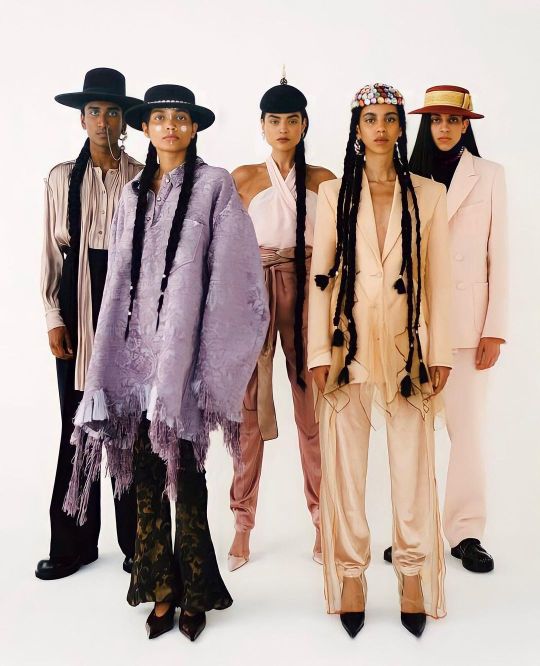
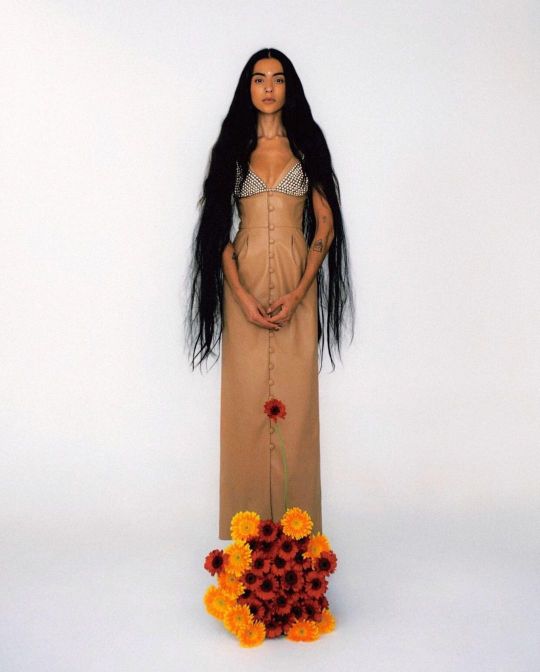


2 notes
·
View notes
Photo

Eugène Delacroix, Jean Francois Gigoux, Cleveland Museum of Art: Prints
Medium: lithograph
https://clevelandart.org/art/1940.1115
7 notes
·
View notes